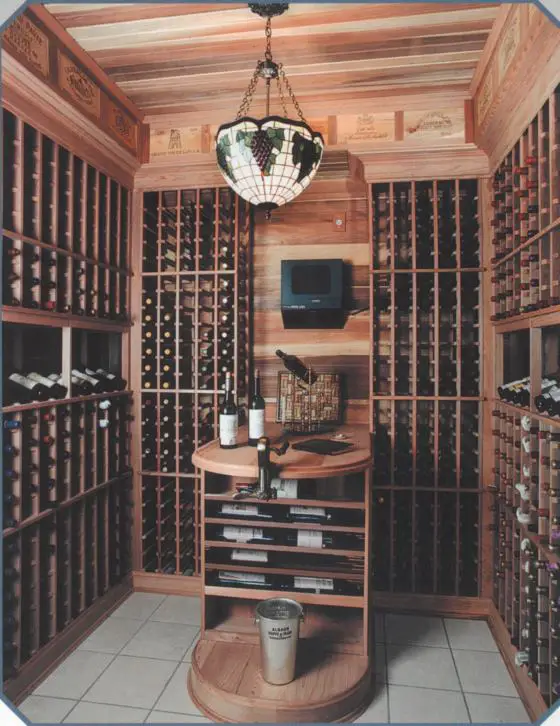Custom Wine Cellars

A Custom Wine Cellar
DEAR TIM: My new wine collecting hobby is getting a tad out of hand. My hall closet simply will not handle my growing wine collection and my wife has instructed me to build a wine storage room. I am wondering how to calculate the size of the space that is required and what is the best way to build the racks to store the wine. Can you build a storage room in a garage if you don't have a basement? How important is temperature and humidity in the room? Dick D., Sun City West, AZ
DEAR DICK: If you imbibe wine on a somewhat frequent basis and like a variety of wines, I can see why the closet no longer works. Simple closet storage can also be dangerous. It is not uncommon for boxes to shift and a bottle to break. That may be acceptable with inexpensive mass produced wines, but to do so with more expensive wines is considered a sacrilege for those people who respect what is inside many wine bottles.
There are many things you need to consider when designing and building a custom wine cellar. For hundreds of years, wine was stored in wine cellars deep underground. This environment provided by Mother Nature happens to be nearly perfect for wine storage. Wines age perfectly at temperatures that are 55-58 F and relative humidity levels anywhere from 55 - 75 percent. Storing wine outside of these temperature and humidity parameters can rapidly affect the taste and quality of the wine.
Your challenge is to create this artificial environment whether it is in a garage, basement or even a room within a house. You can build regular walls but you absolutely must install a continuous high performance vapor barrier on the warm side of the walls and the ceiling of the storage room. The warm side of these walls is the outside of the room, not inside. Be sure to insulate the walls and the ceiling after the vapor barrier is installed. The door that opens into this room should be an insulated exterior grade door that has an excellent threshold seal and continuous weatherstripping around all of the edges of the door.
Lighting within the room is important but should not be overdone. Light can also affect the quality and taste of wines. You may want to install a timer switch on the storage room lights in case you close the door and leave it on by mistake.
Tile flooring works great in wine storage areas because it is easy to clean in case of an unfortunate accident. Hardwood will work but you must leave a one half inch gap around all edges to account for expansion once the wood swells in response to the elevated humidity.
Wine storage racks can be tough to construct from scratch if you are not an experienced carpenter. An inferior homemade design can put a wine collection at grave risk. The average bottle of wine weighs three pounds. It is not uncommon to have 24 bottles in a vertical stack on an eight foot high wall. Most high quality factory made storage systems will have just under 3 vertical columns per lineal foot of wall space. This means you can have about 200 pounds of wine for every lineal foot of storage. That is a lot of weight!
Redwood is an excellent wood for wine storage systems. It is moisture resistant, strong, colorful and non-aromatic. Do not use woods like cedar that have an aroma. Never stain the wood in a storage room. These odors can penetrate the corks and ruin the flavor of wine.
If it were me, I would build the room myself but purchase the wine storage kits or wall systems. They are affordable and the simple ones can be put together with ease. If you want a deluxe wine storage room that includes hand painted floor tile, wall murals, custom etched glass doors, stained glass, wood ceilings, and high efficiency refrigeration and humidity control you can have that as well. If your hobby leads down this path, you will quickly attain the distinctive title of cellar master!
Column 356